 October 22, 2015 John E. Ross, KD8IDJ, Editor
| ||||||||||
Parity Act House Cosponsors Now in Triple Digits! The Amateur Radio Parity Act of 2015 bill in the US House (H.R. 1301) now has 106 cosponsors! ARRL President Kay Craigie, N3KN, credited ARRL members "who understand the importance of the legislation" with making it possible to reach that milestone.
The 100th cosponsor of H.R. 1301 was Rep Larry Bucshon [R-IN], who signed aboard on October 16. Six more cosponsors added their names on October 20 and 21. They are Reps Steve Chabot, [R-OH], Mike Bost [R-IL], and Frank LoBiondo [R-NJ]; Katherine Clark [D-MA]; Thomas MacArthur [R-NJ], and Sheila Jackson Lee [D-TX]. The Amateur Radio Parity Act would direct the FCC to extend its Part 97 Amateur Radio Service rules relating to "reasonable accommodation" of Amateur Service communications to include private land use restrictions. There are two bills, one in the US House and one in the US Senate. US Rep Adam Kinzinger (R-IL) introduced H.R. 1301 on March 4 with 12 original cosponsors from both sides of the aisle. US Sen Roger Wicker (R-MS) introduced S. 1685 into the US Senate on June 25, with Sen Richard Blumenthal (D-CT) as the original cosponsor.
"We are not done by any means," President Craigie added. "Let's push the numbers up and keep our representatives and senators aware of how much we care about this issue." She noted that Scouting's Jamboree On The Air (JOTA) over the October 17-18 weekend introduced thousands of youngsters to Amateur Radio. "Let's make sure their interest can blossom, even if their parents have chosen to live in communities that don't allow antennas at this time," President Craigie urged. "These young people need what Amateur Radio has to offer, and Amateur Radio certainly needs them. Please help them be the future." The ARRL recently introduced a "Clarity on Parity" video, and not only has it been made available on Capitol Hill, it would make an informative Amateur Radio club meeting program. A "Clarity on Amateur Radio Parity" document stresses many of the same points. The ARRL Amateur Radio Parity Act of 2015 page provides more information and explains how members can become involved. ARRL Executive Committee Presented with Draft Enforcement Improvement Plan At the ARRL Executive Committee (EC) meeting on October 3 in Bloomington, Minnesota, ARRL General Counsel Chris Imlay, W3KD, presented a draft plan for the improvement of timely and visible enforcement in the Amateur Radio Service. The ARRL Board had requested the draft at its July meeting. While no details of the draft plan were made public, Executive Committee members discussed actions envisioned in both the short and long term and offered comments that will be taken into account in the next revision of the draft plan. Regulatory matters were just one topic area on the wide-ranging EC agenda.
ARRL CEO David Sumner, K1ZZ, updated the EC on a report to the full Board by Chief Technology Officer Brenan Price, N4QX, regarding prospects for a 5 MHz allocation at next month's World Radiocommunication Conference (WRC-15) in Geneva. Four of the six regional telecommunications organizations (RTOs) have offered affirmative proposals to the agenda item, while one has proposed no change. Several major countries are refraining from supporting the affirmative proposals from their RTOs, however, and it's impossible to predict what WRC-15 delegates will decide.
During its lunch break, President Kay Craigie, N3KN, presented the ARRL President's Award to Patrick W. Tice, WA0TDA, who is retiring after a quarter century as Handiham program coordinator. All attendees, along with Minnesota Section Manager Skip Jackson, KS0J, expressed their congratulations and appreciation to Pat and his wife, Susie. After the meeting resumed, President Craigie and Sumner briefed the EC on ongoing discussions to ensure that Handiham Program services will continue after Tice retires. In other business, Sumner reviewed the future outlook for the ARRL Repeater Directory and related products. A new agreement is in place with 54 of 60 repeater coordinating bodies that will result in an improved Repeater Directory for 2016-17, Sumner said, but he told the EC that the long-term viability of such printed directories is doubtful. These face competition from web-based directories and smartphone apps that accept crowd-sourced data and are growing in popularity. Sumner told the EC that significant investment would be needed, if the quality of the Repeater Directory and related products is to meet future market expectations as well as ARRL organizational objectives. The EC took note of the Programs & Services Committee (PSC) endorsement of a VHF and Above Revitalization Committee recommendation to end the prohibition to contest use of 146.52 MHz, the traditional 2 meter FM simplex "calling channel." Advance notification of the rule change has been communicated to the full Board, and the change will take effect in 2016, starting with the January VHF Contest. President Craigie, noting that the October 3 meeting would be her last as a member of the Executive Committee, expressed her appreciation for the diligence and cooperation of the committee members. President Craigie has already indicated that she will not run again when her second term ends in January. FCC Seeking User Comments on New Beta Website As part of an ongoing research and design project "to dramatically improve the usability and functionality" of its website, the FCC has debuted a new prototype website and wants to know what users think about it. The FCC's 2011 website re-design was not well received, and the Commission has continued to maintain its previous, much older website design in tandem with the newer one.
"The beta website is also connected to our document databases, EDOCS and ECFS, via application programming interfaces (APIs). The APIs allow real-time EDOCS and ECFS updates to display in Headlines and Most Active Proceedings," Bray said. "FCC applications will also be updated and increasingly cloud-based, similar to our new Consumer Help Desk."
Bray said all content on the current FCC website has been migrated to the new Drupal-based site. The FCC IT staff is now integrating that content into what Bray called "new information architecture," which, he said, would offer additional and improved ways of accessing and interacting with the website's content. He said that based on additional feedback the FCC receives during the beta website's "extended" testing period, "we intend to complete the switch to the new site fully later this fall." Users can submit their comments and suggested bug fixes by using a web form or e-mail. ARES/RACES Teams Expected to Join MARS in Coronal Mass Ejection Disaster Exercise Preparations are nearly in place for the previously announced Military Auxiliary Radio System (MARS) coronal mass ejection (CME) disaster communication exercise, which will take place Saturday through Tuesday, November 7-10. Amateur Radio Emergency Service (ARES) and Radio Amateur Civil Emergency Service (RACES) groups are expected to participate in the quarterly contingency HF exercise in support of the US Department of Defense.
English said he's responded to some 90 inquiries from ARES and RACES groups as well as from individuals who would like to involve their ARES teams, and he expects about 50 ARES/RACES-affiliated organizations to participate. He said a few additional active duty military units also hope to take part in the exercise. English said the November exercise would simulate a radio blackout as well as infrastructure damage. "During the exercise, we will simulate the blackout with a 3 hour pause, and then we will bring stations back on air and begin handling requests for information," he told ARRL. Training objectives for this exercise will include understanding what a CME is and how much forecast lead time can be expected; the effects associated with a CME, and what precautions radio operators take to protect their equipment, prior to a severe CME. Following the simulated CME, operators will assess its effects and report that information. This will involve "inter-operation with Amateur Radio operators and groups to assist in assessment," English said. ARES and RACES teams, as well as individual radio amateurs, wishing to participate in this exercise may contact MARS and provide contact information. Hudson Amateur Radio Council Donates Nearly $9000 to ARRL At the recent meeting of the ARRL Executive Committee in Minneapolis, ARRL Hudson Division Director Mike Lisenco, N2YBB, representing the Hudson Amateur Radio Council (HARC), donated $8922.93 to the ARRL Legislative Issues Advocacy Fund.
"HARC was formed over 50 years ago to help support expenses incurred by clubs sponsoring Division conventions," Lisenco said. "Over the past 30 years, conventions in the Hudson Division have become few and far between, due to the costs associated with an event in the metropolitan New York area, as well as finding clubs with the people to staff such an event. The last convention was held in 2000." Lisenco said Dave Popkin, W2CC, became the guardian of the HARC money that remained after the last convention and was savvy enough to place it in a certificate of deposit that yielded the substantial sum donated to the ARRL Legislative Issues Advocacy Fund. "The Division is indebted to Dave for his stewardship and grateful that he was willing to see these monies go to an extremely worthy cause," Lisenco added. Accepting the donation on behalf of the League were ARRL President Kay Craigie, N3KN, and ARRL CEO David Sumner, K1ZZ. Amateur Radio was Part of Typhoon Koppu Response in the Philippines Amateur Radio in the Philippines was part of the comprehensive response to the Category 4 Typhoon Koppu -- known locally as Typhoon Lando -- which hit the islands over the past weekend with damaging winds and heavy rain. According to the National Disaster Risk Reduction and Management Council (NDRRMC), the National Telecommunications Commission (NTC) coordinated with the Philippine Amateur Radio Association (PARA) to monitor conditions in affected regions through their local Amateur Radio associations.
The typhoon came ashore on northeastern Aurora province on October 19, leaving at least a dozen dead, forcing tens of thousands from their homes, flooding villages, and knocking out power and telecommunications. The storm later weakened to a tropical storm. The overall response also involved the fire service, Coast Guard, police, army, the Red Cross, and other trained volunteers. -- Thanks to Jim Linton, VK3PC, Chairman IARU Region 3 Disaster Communications Committee IARU Region 3 Conference Opens with a Gong The 16th International Amateur Radio Union (IARU) Region 3 triennial conference opened in Bali, Indonesia, on October 12 with some pomp and circumstance that included remarks from government officials and an opportunity for IARU President Tim Ellam, VE6SH/G4HUA, to help sound the gong to bring the meeting to order.
Representatives from 15 IARU member societies, including the ARRL, attended. Three other societies were represented by proxy. In his welcoming remarks, Indonesia's minister of communication and information technology recognized the important role of Amateur Radio in disaster communication in his country with many islands. Participants were uniformly impressed with the excellent organization of the conference by ORARI, as well as with ORARI's close government ties.
The conferees got down to business promptly, designating two working groups. Working Group 1 (WG1) addressed such policy issues as education, training, development of Amateur Radio, and international and regional conferences involving radio administrations with special concentration on youth. ARRL International Affairs Vice President Jay Bellows, K0QB, chaired WG1. Working Group 2 (WG2) dealt with such operational and technical matters as emergency communication, digital modes, a common APRS frequency, and Region 3 band plans. Titon Dutono, YB3PET, chaired WG2, and ARRL CEO David Sumner, K1ZZ, served as its secretary. In all, working group members discussed 37 papers and submitted recommendations to the conference for adoption.
Among recommendations adopted was one to ask the IARU Administrative Council to make available information on the use of the Amateur Satellite Service for member societies, satellite groups, Amateur Satellite operators, and concerned radio amateurs. This information would include, but not be limited to, criteria for a satellite to be in the Amateur Satellite Service and the procedure for IARU satellite frequency coordination. The conference also adopted adjustments to the Region 3 band plans. Region 3 directors will consider making the format similar to that used in Regions 1 and 2. Societies were further asked to publicize digital mode developments and educate amateurs not to interfere with Amateur Radio digital transmissions. Attention also was called to newer digital modes, such as MFSK16, DominoEX, and FSQ, as possibly better performers than PSK31.
The IARU Administrative Council (AC) met just prior to the Region 3 conference, and AC members also took part in the conference. In addition to Ellam, others on hand from outside Region 3 included IARU Vice President Ole Garpestad, LA2RR, and Secretary Rod Stafford, W6ROD, Region 1 President Don Beattie, G3BJ, and Vice President Faisal Al-Ajmi, 9K2RR, and Region 2 President Reinaldo Leandro, YV5AM, and Vice President Jose Molina, YS1MS. Following seven nominations, six individuals, including four incumbents, were elected to the IARU Region 3 Board. They were Rhee Joong Geun, HL1AQQ; Shizuo Endo, JE1MUI; Peter Young, VK3MV; Gopal Madhavan, VU2GMN; Wisnu Widjaja, YB0AZ, and Don Wallace, ZL2TLL. Madhavan was re-elected as chairman. Katsumi "Ken" Yamamoto, JA1CJP, was returned unopposed as Secretary. New terms will begin on November 15. Before concluding on October 16, the Region 3 Conference accepted an invitation from the Korean Amateur Radio League (KARL) to host the 17th IARU Region 3 Conference in Seoul in late 2018. The ARDF World Championships will take place that same year in Korea. AO-85 Enthusiasm Prevails at AMSAT 2015 Space Symposium and Annual Meeting Excitement and enthusiasm over the recently launched Fox-1A CubeSat, now known as AO-85, permeated the just-concluded AMSAT 2015 Space Symposium and Annual Meeting. Nearly 120 attended the gathering October 16-18 in Dayton, Ohio. AMSAT Vice President for Engineering Jerry Buxton, N0JY, told his forum that AO-85 is working well and that telemetry reports from users have been extremely helpful. Buxton told his forum audience that the Fox team is mulling what might be causing what he called "a perceived loss of sensitivity" on the AO-85 70 centimeter receiver. "There's a lot of speculation," he allowed. He also discussed the subsequent entries in the Fox CubeSat series. The AO-85 transponder is unavailable for general use until October 23 for further commissioning.
AMSAT President Barry Baines, WD4ASW, announced the appointment of Joe Kornowski, KB6IGK, of Austin, Texas, as the new editor of The AMSAT Journal, beginning with the November/December 2015 issue. He succeeds JoAnne Maenpaa, K9JKM. Kornowski has served as an Assistant Editor since 2014. Frank Bauer, KA3HDO, provided an update on Amateur Radio on the International Space Station (ARISS). While the financial situation is not as bleak as it was in 2014, Bauer indicated that ARISS needs to raise $90,000 annually to maintain its current level of operation, and $214,000 to grow operations and meet its desired goals. At the AMSAT Board of Directors meeting on October 15, prior to the 2015 AMSAT Space Symposium, the Board approved the appointment of officers. Barry Baines, WD4ASW, will continue as the president of AMSAT-NA. Other officer positions also remained unchanged, with Drew Glasbrenner, KO4MA, as Vice President for Operations; Jerry Buxton, N0JY, as Vice President for Engineering, and Frank Bauer, KA3HDO, as Vice President for Human Spaceflight. Paul Stoetzer, N8HM, will serve as secretary, while Keith Baker, KB1SF/VA3KSF, will be treasurer. Martha Saragovitz will continue as AMSAT-NA manager. The positions of Executive Vice President, Vice President for User Services, and Vice President for Marketing remain open. Florida Radio Amateurs Support Bicycle Festival Lake County, Florida, ARES and the Lake Amateur Radio Association (LARA) this month again supported radio communication for the Mount Dora Bicycle Festival -- something they've been doing for almost 25 "Despite a little early morning fog, good weather prevailed for the 3 day event," said Ted Luebbers, K1AYZ. "Temperatures were moderate with some humidity. For many of the riders this has become an event they look forward to enjoying each year." Luebbers explained that the festival is not a competitive race but a series of 12 separate bicycle tours of Florida's scenic Lake County countryside. "Lake County is blessed with 1400 named lakes and is considered to be Florida's Hill Country," Luebbers said.
"Some of these hills offer a unique challenge for even the most experienced bicycle riders," he said. "The longest ride is 100 miles and the shortest is 12 miles. Riders choose which rides they want to take each day." This year's festival attracted 1325 participants. The radio-equipped mobile vehicles the hams provided transported 30 riders and their bicycles back to the starting area over the 3 days, due to mechanical breakdowns, medical issues, or fatigue. The most serious injury was a broken collarbone. This year, 25 Amateur Radio volunteers took part. -- Thanks to Ted Luebbers, K1AYZ In Brief...
. . . . . . The K7RA Solar Update Tad Cook, K7RA, Seattle, reports: Average daily sunspot numbers over the past week were up by 38.1 points to 75, and average daily solar flux rose by 30.7 points to 118.2. Geomagnetic conditions were quiet over the week, with average planetary A index declining from 25.1 to 11, and mid-latitude A index dropping from 17.6 to 9.1.
Predicted planetary A index is 10 on October 22; 5 on October 23-27; 8 on October 28-29; 10 on October 30; 5 on October 31-November 2; 50 on November 3; 40 on November 4; 25 on November 5; 12 on November 6-7; then 20, 25, 20, and 10 on November 8-11, and 8 on November 12-13. The A index then drops to 5 on November 19-24, then bounces back to 50 on November 30. Those Ap index values of 50 on November 3 and again on November 30 seem to be echoes of the October 7-8 period, when planetary A index was 77 and 56. The high values are each spaced one whole solar rotation (27-28 days) from each other. Sunspot numbers for October 15 through 21 were 49, 68, 83, 81, 94, 77, and 73, with a mean of 75. The 10.7 cm flux was 106.8, 109.1, 116.6, 119.5, 123.7, 122.8, and 129, with a mean of 118.2. Estimated planetary A indices were 10, 8, 11, 22, 5, 9, and 12, with a mean of 11. Estimated mid-latitude A indices were 9, 8, 9, 15, 3, 8, and 12, with a mean of 9.1. Send me your reports and observations. Just Ahead in Radiosport
See the ARRL Contest Calendar for more information. Upcoming ARRL Section, State, and Division Conventions and Events
Find conventions and hamfests in your area.
. . .
Subscribe to...
Free of charge to ARRL members...
| ||||||||||
 "They have signed letters at hamfests and conventions all over the country, at booths staffed by Directors, Vice Directors, Section Managers, and other ARRL officials," President Craigie said. Backing up those efforts have been recent personal visits to Capitol Hill by ARRL Directors Dick Isely, W9GIG, and Mike Lisenco, N2YBB, as well as by General Counsel Chris Imlay, W3KD.
"They have signed letters at hamfests and conventions all over the country, at booths staffed by Directors, Vice Directors, Section Managers, and other ARRL officials," President Craigie said. Backing up those efforts have been recent personal visits to Capitol Hill by ARRL Directors Dick Isely, W9GIG, and Mike Lisenco, N2YBB, as well as by General Counsel Chris Imlay, W3KD.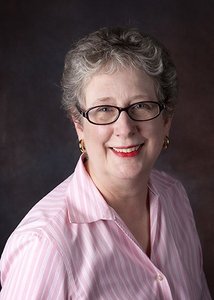
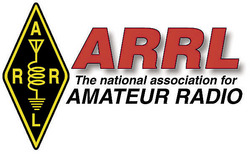 Imlay also reported on several ongoing FCC proceedings, on which no action has occurred since the Board last met in July. He said there has been no indication from the FCC as to when to expect a Notice of Proposed Rule Making in response to the ARRL's petition (RM-11708) asking the Commission to replace the existing symbol rate limit on HF data transmissions with a bandwidth limit.
Imlay also reported on several ongoing FCC proceedings, on which no action has occurred since the Board last met in July. He said there has been no indication from the FCC as to when to expect a Notice of Proposed Rule Making in response to the ARRL's petition (RM-11708) asking the Commission to replace the existing symbol rate limit on HF data transmissions with a bandwidth limit.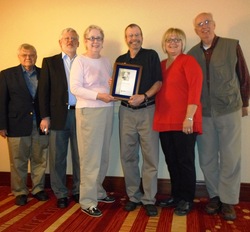
 "You spoke, we listened," FCC Chief Information Officer David Bray said in an October 9
"You spoke, we listened," FCC Chief Information Officer David Bray said in an October 9 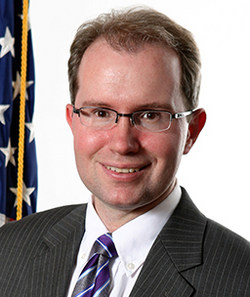
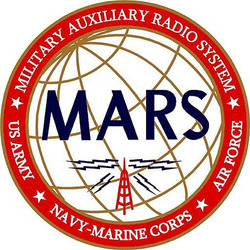 "We are looking forward to this exercise and the opportunity to partner and train with the larger Amateur Radio community," Army MARS Program Manager Paul English, WD8DBY, told ARRL. The exercise scenario will simulate a CME event and focus on actions that radio operators should take prior to and following such an event, which could impact HF propagation. English said leaders from Army and Air Force MARS will hold a final exercise coordination teleconference on October 28 "to answer any final questions about the exercise and make sure everyone is ready to train."
"We are looking forward to this exercise and the opportunity to partner and train with the larger Amateur Radio community," Army MARS Program Manager Paul English, WD8DBY, told ARRL. The exercise scenario will simulate a CME event and focus on actions that radio operators should take prior to and following such an event, which could impact HF propagation. English said leaders from Army and Air Force MARS will hold a final exercise coordination teleconference on October 28 "to answer any final questions about the exercise and make sure everyone is ready to train."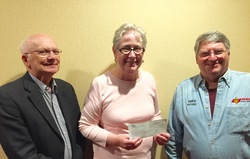
.jpg) PARA stood by to monitor reports from Amateur Radio groups, and through the PARA DU Net, went into emergency mode to monitor reports from the eastern seaboard of the main island, Luzon, through its Ham Emergency Radio Operator Network (HERO). Lando may have been the second most powerful storm to strike the country this year.
PARA stood by to monitor reports from Amateur Radio groups, and through the PARA DU Net, went into emergency mode to monitor reports from the eastern seaboard of the main island, Luzon, through its Ham Emergency Radio Operator Network (HERO). Lando may have been the second most powerful storm to strike the country this year.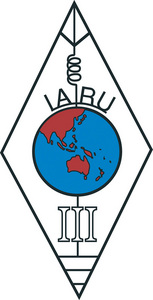 Conference President Sutiyoso, YB0ST, welcomed the attendees on behalf of the hosting Indonesian Amateur Radio Organization (ORARI). IARU Region 3 Chairman Gopal Madhavan, VU2GMN, greeted delegates on behalf of the IARU Region 3 officers, while Ellam welcomed participants on behalf of the IARU officers and the International Secretariat and thanked ORARI for hosting the meeting. Ellam said the IARU team attending the World Radiocommunication Conference 2015 (WRC-15) in November would make its best effort for a possible Amateur Service allocation near 5 MHz.
Conference President Sutiyoso, YB0ST, welcomed the attendees on behalf of the hosting Indonesian Amateur Radio Organization (ORARI). IARU Region 3 Chairman Gopal Madhavan, VU2GMN, greeted delegates on behalf of the IARU Region 3 officers, while Ellam welcomed participants on behalf of the IARU officers and the International Secretariat and thanked ORARI for hosting the meeting. Ellam said the IARU team attending the World Radiocommunication Conference 2015 (WRC-15) in November would make its best effort for a possible Amateur Service allocation near 5 MHz.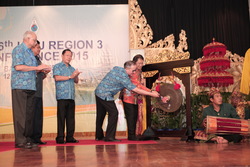

%2010-13%20K1ZZ%20YB3PET.jpg)
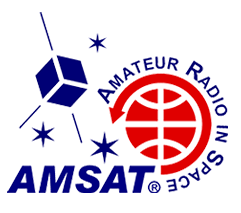 AMSAT-NA Board Member Bob McGwier, N4HY, of Virginia Tech, outlined efforts to orbit the Phase 3E (P3E) project announced earlier this year. Virginia Tech approached the US Government last July to fly P3E in order to support scientific payloads as well as to serve as an Amateur Radio satellite. As McGwier explained, the project faces some daunting political and technical challenges. He is working with AMSAT-DL to transfer the satellite -- which has been in storage in Germany for years -- to his Virginia Tech team for integration into a government project that would place the satellite into an elliptical high-Earth orbit (HEO). Before the satellite becomes available for Amateur Radio applications, though, it would be shifted into a new -- and lower -- elliptical HEO orbit. If all goes smoothly, the project could reach fruition in 2018.
AMSAT-NA Board Member Bob McGwier, N4HY, of Virginia Tech, outlined efforts to orbit the Phase 3E (P3E) project announced earlier this year. Virginia Tech approached the US Government last July to fly P3E in order to support scientific payloads as well as to serve as an Amateur Radio satellite. As McGwier explained, the project faces some daunting political and technical challenges. He is working with AMSAT-DL to transfer the satellite -- which has been in storage in Germany for years -- to his Virginia Tech team for integration into a government project that would place the satellite into an elliptical high-Earth orbit (HEO). Before the satellite becomes available for Amateur Radio applications, though, it would be shifted into a new -- and lower -- elliptical HEO orbit. If all goes smoothly, the project could reach fruition in 2018.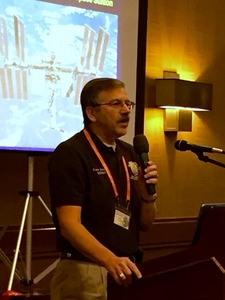
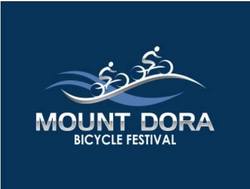 years. During the October 9-11 event, ham radio volunteers provided communication from each rest area as well as from mobile radio units patrolling the various bicycle routes. The Mount Dora Bicycle Festival is sponsored each year by the Mount Dora Chamber of Commerce and attracts cyclists from all over the country.
years. During the October 9-11 event, ham radio volunteers provided communication from each rest area as well as from mobile radio units patrolling the various bicycle routes. The Mount Dora Bicycle Festival is sponsored each year by the Mount Dora Chamber of Commerce and attracts cyclists from all over the country.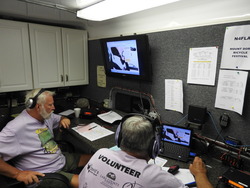
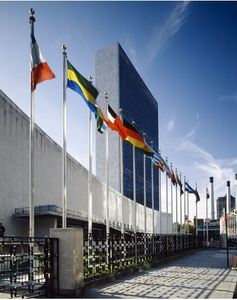 Look for 4U70UN this weekend! To commemorate the 70th anniversary of the United Nations on October 24, the headquarters Amateur Radio club station
Look for 4U70UN this weekend! To commemorate the 70th anniversary of the United Nations on October 24, the headquarters Amateur Radio club station 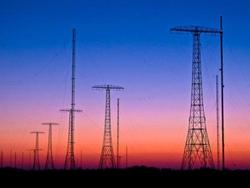 SAQ Alexanderson Alternator VLF Transmission set for UN Day, October 24: The
SAQ Alexanderson Alternator VLF Transmission set for UN Day, October 24: The 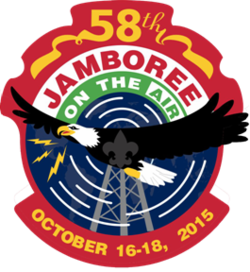 JOTA Stations Urged to File their 2015 Reports: National JOTA Organizer Jim Wilson, K5ND, is calling on all stations that participated in the 2015 Jamboree On The Air (JOTA) to
JOTA Stations Urged to File their 2015 Reports: National JOTA Organizer Jim Wilson, K5ND, is calling on all stations that participated in the 2015 Jamboree On The Air (JOTA) to  Ofcom Poised to Cancel Unrenewed Amateur Licenses: UK telecommunications regulator Ofcom has
Ofcom Poised to Cancel Unrenewed Amateur Licenses: UK telecommunications regulator Ofcom has 
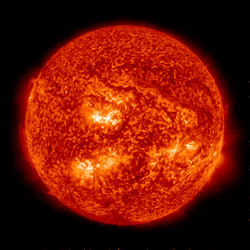 Predicted solar flux is 130 on October 22-24; 125 on October 25; 120 on October 26-27; 115 on October 28-29; 90 on October 30; 85 on October 31-November 1; 80 on November 2-6; then 85, 90, 95, 100, 105, 110, 115, and 120 on November 7-14; 125 on November 15-17; 120 on November 18-20, and 115 on November 21-22. Flux values then drop to 80 on November 28 through December 3.
Predicted solar flux is 130 on October 22-24; 125 on October 25; 120 on October 26-27; 115 on October 28-29; 90 on October 30; 85 on October 31-November 1; 80 on November 2-6; then 85, 90, 95, 100, 105, 110, 115, and 120 on November 7-14; 125 on November 15-17; 120 on November 18-20, and 115 on November 21-22. Flux values then drop to 80 on November 28 through December 3.







